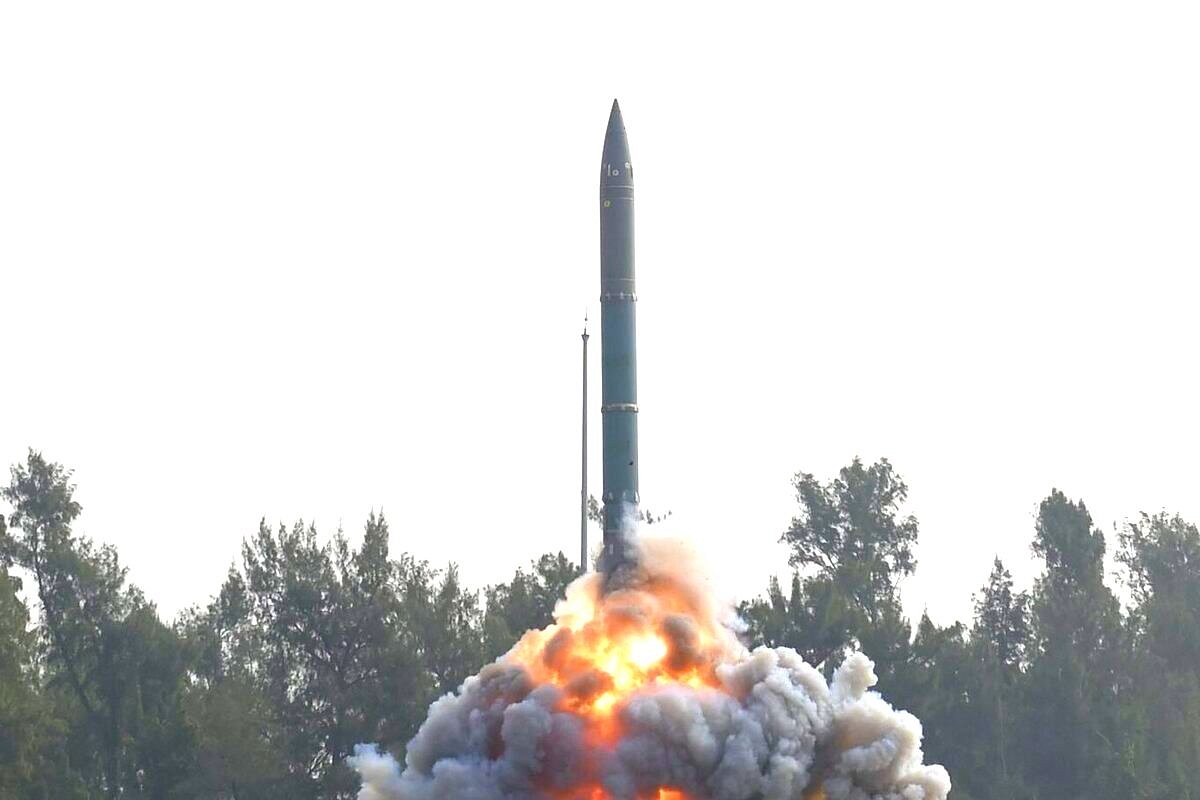News Brief
India Tests 'SMART' Weapon System Capable Of Hitting Enemy Submarines At Long Range
- The weapon gives the Indian Navy stand-off capability against enemy submarines.

Missile-assisted release of torpedo.
India has successfully tested the Supersonic Missile Assisted Release of Torpedo or SMART weapon system capable of hitting enemy submarines operating beyond the conventional range of the torpedo.
The test, which was the second launch of the SMART weapon system, was conducted by the Defence Research and Development Organisation (DRDO) from the Wheeler Island off the coast of Odisha. A ground-based, truck-mounted launcher was used to fire the weapon.
With a reported range of 650 kilometres, the weapon system gives the Indian Navy stand-off capability in anti-submarine warfare.
"It is a missile-assisted release of lightweight anti-submarine torpedo system for anti-submarine warfare operations far beyond torpedo range. This launch and demonstration is significant in establishing anti-submarine warfare capabilities," the DRDO said after the first test last year.
The weapon system has been developed by DRDO laboratories, including Defence Research and Development Laboratory, Research Centre Imarat in Hyderabad, Aerial Delivery Research and Development Establishment, Agra, Naval Science and Technological Laboratory in Visakhapatnam.
"DRDO has taken up a project to develop...a missile-assisted release anti-submarine torpedo system for ASW operations far beyond torpedo range (50-650 km)," Ministry of Defence said in its annual report for 2018-19.
With the presence of Chinese submarines in the Indian Ocean region on the rise, this anti-submarine warfare system will act as a deterrent.
According to reports, the system can be launched from shore-based naval facilities and Indian Navy warships. It takes off like a missile and delivers the torpedo to a water-entry point close to a targeted submarine.
It has a two-way data link to send and receive data, which can be used by warships or airborne submarine detection platforms such as the Indian Navy's future MH-60R Seahawks to provide the exact location of the enemy submarine being targeted. The Indian Navy also has an expanding fleet of P-8I submarine-hunting aircraft, a variant of Boeing's P-8A Poseidon, which can be used for target detection.
After reaching close to its target, the torpedo is ejected by the missile into the water. The torpedo then begins moving towards its target.
The United States Navy has a similar weapon system called RUM-139 Vertical Launch Anti-Submarine Rocket. Fired from the Mk 41 Vertical Launch System, it uses an Mk 54 lightweight torpedo to hit targets. Russia has a Soviet-era system called RPK-6, which is fired into the water from a torpedo tube before it blasts off into the sky. Japan also has a supersonic vertically-launched anti-submarine rocket.
However, India's SMART system has a significantly longer range than the US, Russian and Japanese systems.
Support Swarajya's 50 Ground Reports Project & Sponsor A Story
Every general election Swarajya does a 50 ground reports project.
Aimed only at serious readers and those who appreciate the nuances of political undercurrents, the project provides a sense of India's electoral landscape. As you know, these reports are produced after considerable investment of travel, time and effort on the ground.
This time too we've kicked off the project in style and have covered over 30 constituencies already. If you're someone who appreciates such work and have enjoyed our coverage please consider sponsoring a ground report for just Rs 2999 to Rs 19,999 - it goes a long way in helping us produce more quality reportage.
You can also back this project by becoming a subscriber for as little as Rs 999 - so do click on this links and choose a plan that suits you and back us.
Click below to contribute.
Latest